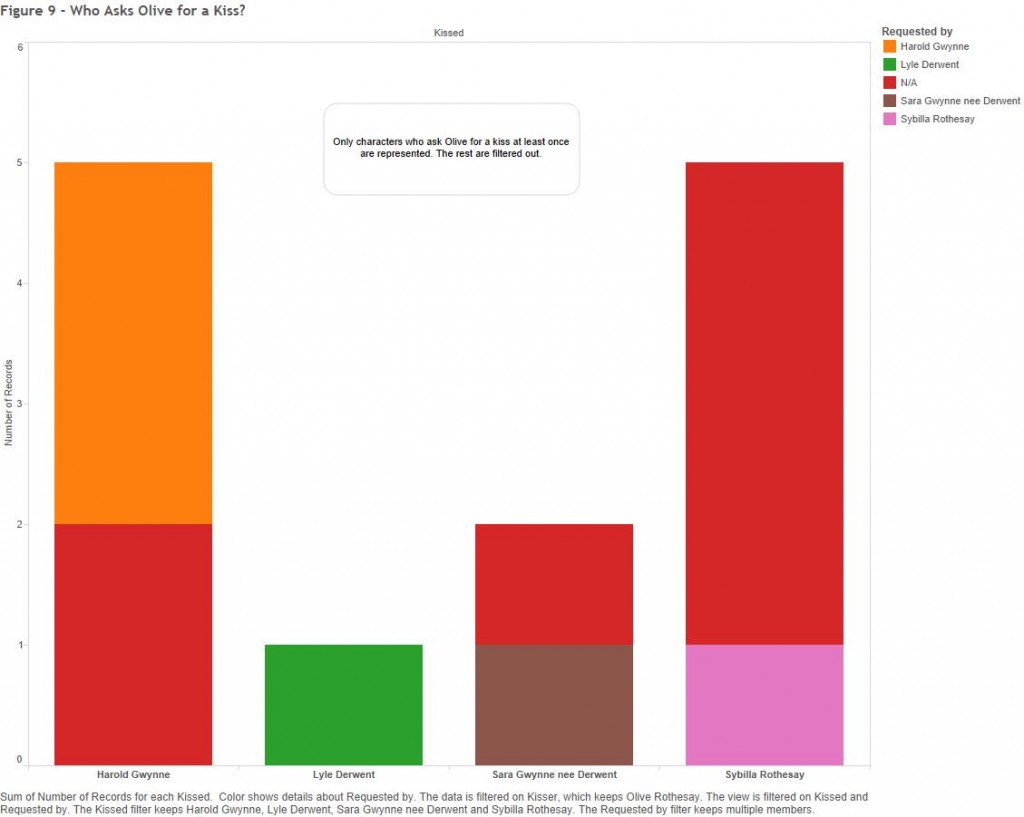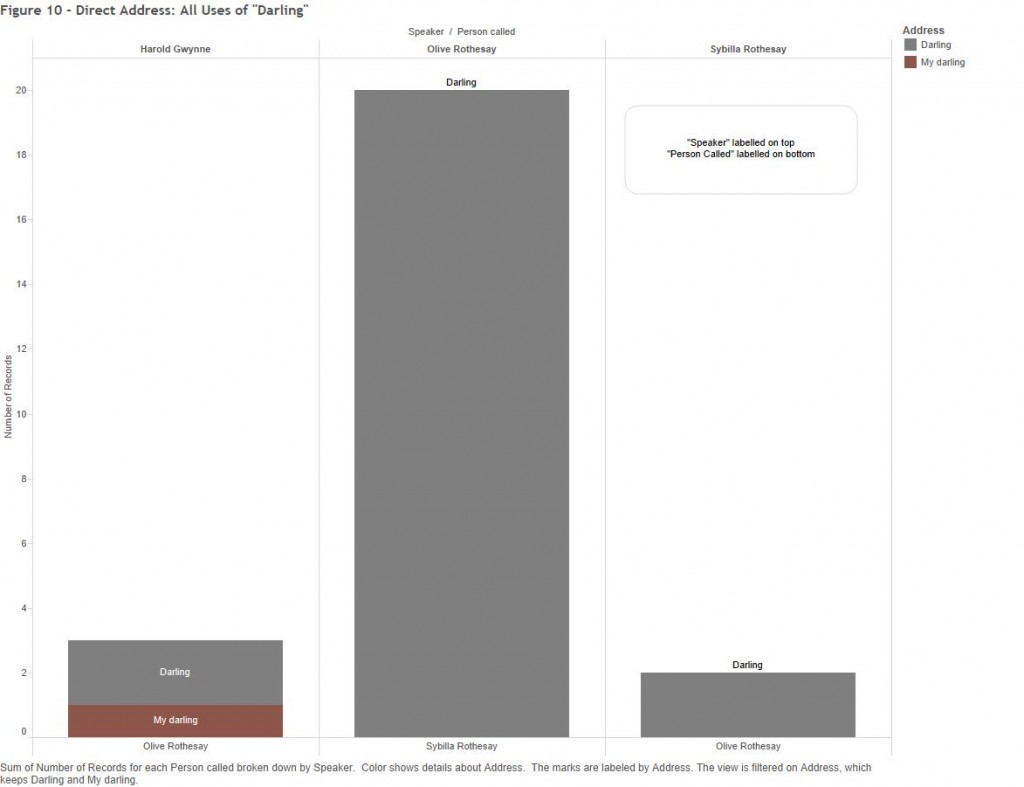An Introduction to the Kisses of Dinah Mulock Craik’s Olive
Why count kisses? It seems almost silly to state “I’ve counted the kisses in a Victorian novel,” but perhaps that discounts the emotional and informational potential a kiss can hold. The original goal of collecting this data was to test whether counting kisses could reveal anything about the relationships between the characters within Olive. This rather vague general goal was refined further by looking for theories and ideas about Olive which could be tested or studied through the kisses. Indeed, readings of Olive through the lenses of racial hybridization, gender and queer theory, and Freudian psychology can all be examined through the interaction between characters. My subsequent blog posts will show that the network of kisses, with each kiss’s complex of meaning, can question, disprove, approve, or add nuance to those close readings of Craik’s novel.
Perhaps a more problematic question is: why use the tools of distant reading? The honest answer: to see what such an approach had to offer, and to see what limitations there were. One of the most apparent benefits was an increase in scope, despite the fact that I am examining a single text. To explain, in her paper “The Victorian Literary Kiss” Elizabeth Gitter asserts that in Victorian literature, the meaning of a kiss was “complex and contradictory” (167).[1] Problematically, though her selection of texts is expansive (though mostly limited to male authors), her definition of a kiss is limited to that between male/female lovers, engaged in some sort of courtship behavior (166, 169). A close-reading of Olive can actually back up at least one aspect of Gitter’s paper; when Olive kisses her mother, Craik explicitly states “With that last kiss she received her mother’s soul” (chap 32)[2], clearly backing up Gitter’s claim that in one aspect “the kiss … is a symbol of spiritual fusion” (166). However, neither that assertion nor the one regarding a kiss as a way to ingest the lover can cover the two kisses Christal Manners gives to Meliora Vanbrugh in greeting, to provide but one example. The kisses in Olive are not always heterosexual, nor even necessarily sexual. This opens the possibility that it may take a distant reading of a large amount of Victorian texts to take in a wider scope of kisses, showing how complex and contradictory the Victorian kiss actually was.
That said, my project may not be classified as “distant reading”. Moretti, in Graphs, Maps, Trees describes close reading as focused on specific works of literature and even specific “unique” and/or “exceptional” portions of text (3). Technically, I did just that. I focused on a single text, and it was I who, out of necessity, physically read each instance of kissing within the text, recording elements (kisser, kissed, gender-mix, reason for kiss, etc.). This, arguably, is close reading. However, Frederick Gibbs and Daniel Cohen argue that close reading and distant reading need not be divorced, stating specifically that one can combine “textual work and technical tools” (70), though they limit “textual work” to the generation of questions and the provider of context to and interpretation of the results of the computer generated data. Distant reading, that is studying texts without directly reading them (Moretti “Conjectures” 56-57), plays a role in my project as well, in the form of the analysis of the collected data and the graphs it generated, and even of most of the gathering methods. My project is largely focused on reading the quantitative data generated, rather than Olive directly. Thus perhaps my approach could be called a “hybrid reading”.
With the goal of making the data more amenable to critique and to use by other researchers, I shall now detail how I collected the data (Search Terms), how I categorised/organised the kisses (Subject Headings) and briefly what I tend to omit from my graphs (Begone!). This discussion shall transparently show where certain limitations to distant reading data gathering techniques required my input and thus the interpretations offered through close reading.
Search Terms
Using Voyant to search Olive for every instance of the word “kiss” quickly proved to be too unrefined a net. Gitter unintentionally illustrates the problem with her paper’s first quote (from Shelly) which describes a kiss without using the word “kiss” even once (165). Widening the search terms to include the “sources” of a kiss – lip(s), mouth, face and cheek(s)[3] – proved successful, but generated word-use instances with nothing to do with kisses, which had to be discarded. The final pass humbly followed the footsteps of Ryan Heuser and Long Le-Khac by expanding the terms using the OED’s historical thesaurus function (82) to find synonyms for “kiss” and other similar terms that were in use in the mid-1800s. By trying to ensure my preconceived notions did not interfere with data gathering (see Heuser and Le-Khac 81), I made a move against data errors. All the kisses, with all the various ways Craik wrote about them, were counted. Not looking at every synonym and different expression would have been akin to forgetting about the use of the long-s in typography, counting only short-s instances of a word and mistakenly drawing conclusions (Mandell et al. section 1). Therefore, every avenue to finding and counting all the kiss forms was used.
Subject Headings
While it is true that, given my limited programming skill, it was I who typed each data point into the excel spreadsheet, most of the time I was simply recording easily read ‘facts’ from the text. Only occasionally did I have to make decisions due to narrative ambiguity. Thus, though I will not be using all of the data in the later blog posts, it seems prudent to disclose those troublesome moments.
Kisser and Kissed – Normally straightforward as Craik tends to word things such that it is clear Person A kissed Person B. There were two instances where Craik wrote anything akin to “A and B kissed”, which would have complicated the ability to label Kisser and Kissed. First, Olive laments to herself, “Elspie was going away, for ever, without one kiss, one good-bye” (chap 8). I recorded it as Elspie kissing Olive (though it never happens, see below), but the reverse could be just as true. Second, one of the kisses between Lyle and Olive does not state who the kisser and kissed are; the decision was thus based on how Lyle worded his request (chap 17).
Type of Relationship – Examples: parent-child, friends, spouses. I decided on the heteronormative categorization of “friends” for the kisses between Olive and Sara, despite the possible queer reading of their relationship, because the narrator labels them first friends (chapter 11). Olive and Christal’s relationship tag changes based on a reading of how the two characters saw their relationship at that time.
Chapter – Recorded which chapter a kiss occurred in (or in which it was mentioned, if it never actually happened; see below). One kiss happens in chapter 14, and is recalled in chapter 41; the recollection is only noted in the Quotation column as it is not another instance.
Requested by – Simply records who requested the kiss, if anybody; “request” requiring the character to inform another character vocally, or in a letter. Therefore, Olive’s lament regarding Elspie (see above) does not qualify.
Actually Happened? – Asks if the kiss actually occurs within the story world/narrative; normally easy to tell, there were four exceptions. A) The first kiss between Olive and Lyle is only confirmed to have happened because Lyle uses the word “again” in his request for the second (chap 17). B) & C) Twice when Olive asks Angus to kiss Sybilla, it is uncertain whether he does so, though one can assume he did. The first time (chap 10) was labeled NO because there is no in-text proof. The second (chap 14) was labeled YES, because Angus leaves the room, then returns, likely fulfilling Olive’s request in the interim. D) In chapter 31, Olive begs her mother to kiss her, but in the next sentence begins talking with Harold. It is extremely unclear if the kiss was given, thus labeled NO, even though it seems strange Sybilla wouldn’t.
Body Part Kissed – Easy when the body part is explicitly stated; a few body part labels were normalized. For example, “brow” was changed to “forehead” for consistency’s sake. When no body part was stated it was assumed to be on the lips, though perhaps a few instances could be argued against.
Reason for/Quality of Kiss – General classification of the kiss based on the situation it occurs in (greeting, parting, etc.) or a character’s apparent reason for kissing (healing, consoling, etc.). “Free/loving” became the classification for those kisses which seemed to have no other reason than wanting to kiss the other. Please note: these labels simplify the kisses to make them countable, only a close reading can argue all the nuances in this category.
Gender Mix – Self-explanatory as Olive lacks any cross-dressing or otherwise ambiguously gendered characters. Stated as [sex of kisser] – [sex of kissed].
Race of Kisser/Kissed – The labeling of races follows Juliet Shields’ categorization of the characters. Celt refers to characters with Scottish Highland, Welsh, and/or Irish heritage (such as Harold), with Saxon referring to the English (Shields 287). Ailie and Olive are “Celt-Saxon Mix” and Christal is “Octoroon” also following Shields (288).
Iteration/Single/Multiple – This column was included to deal with the problem of counting the kisses which otherwise would be uncountable. Most kisses were single events, thus took up one row and were labeled “single”. Some were “iterations”, that is, a single instance of an uncertainly numbered chain of kisses. For example, Olive once kisses Christal “as usual” (chap 28), meaning this one kiss within the narrative (thus only one row, like a single) is just one of a regular occurrence of unknown quantity. An unknown amount of kisses at one time, unfortunately, had to be treated as a single instance: one row, with the label of “multiple”. When the amount was known (half-a-dozen, for example), each single kiss was put on a separate row, and labeled “single”.
Quote – Here I recorded the quote of the kiss, and its request. A few OED definitions were added too, for clarity.
BEGONE!
I took Heuser and Le-Khac’s caution against “the tendency to throw away data that does not fit our established concepts” very seriously (81). Thus, my spreadsheet contains both the kisses that do not actually happen and the two metaphorical kisses in the text.[4] That said, in the graphs, which were made using Tableau, I tended to filter out both, as I wanted to draw most of my conclusions (and further questions) on the kisses that actually occur between characters.
So, in the subsequent blog posts, I will mention the few times I include the NOs and why. Other exclusions, such as limiting my examination to a subset of characters, will also be detailed as required.
Endnotes
[1] Published in 1985, Gitter’s paper provides the additional benefit of an older academic viewpoint that could be reborn and re-examined using the newer approach of distant reading. Old conversations could be shown to have relevance still though DH projects.
[2] All quotations from Olive are from the 1875 edition of the novel, as found on the Project Gutenberg website, as this was the text I used for the collection of the data. Unfortunately, that means there are no page numbers, thus chapters are cited.
[3] These terms were chosen because, from the preliminary search, they appeared to be the terms Craik used with kisses.
[4] The two metaphorical kisses are, first, the sealing-wax kisses [kiss: “A fanciful term for a drop of sealing-wax accidentally let fall beside the seal.” – “kiss, n.” OED] a hypothetical woman (the reader?) and her first “girlfriend” (chap 11). While technically not a real kiss, perhaps the emotion remains. Second, is a sunbeam “kissing” a portrait (chap 37).
Works Cited
Craik, Dinah Maria. Olive. London: Macmillan, 1875. Project Gutenberg. 24 Oct. 2012. Web. 12 Mar. 2015.
Gibbs, Frederick W., and Daniel J. Cohen. “A Conversation with Data: Prospecting Victorian Words and Ideas.” Victorian Studies 54.1 (2011): 69-77. Project Muse. Web. 22 Mar. 2015.
Gitter, Elizabeth G. “The Victorian Literary Kiss.” Browning Institute Studies 13 (1985): 165-80. JSTOR. Web. 22 Mar. 2015.
Heuser, Ryan, and Long Le-Khac. “Learning to Read Data: Bringing out the Humanistic in the Digital Humanities.” Victorian Studies 54.1 (2011): 79-86. JSTOR. Web. 22 Mar. 2015.
“kiss, n.” OED Online. Oxford University Press, March 2015. Web. 10 Mar. 2015.
Mandell, Laura, et al. “How to Read a Literary Visualisation: Network Effects in the Lake School of Romantic Poetry.” Digital Studies / Le Champ Numérique 3.2 (2012): n. pag. Web. 11 Feb. 2015.
Moretti, Franco. Graphs, Maps, Trees: Abstract Models for a Literary History. London: Verso, 2005. Print.
—. “Conjectures on World Literature.” New Left Review 1 (2000): 54-68. Web. 10 Apr. 2015.
Shields, Juliet. “The Races of Women: Gender, Hybridity, and National Identity in Dinah Craik’s Olive.” Studies in the Novel 39.3 (2007): 284-300. JSTOR. Web. 2 Feb. 2015.

The Kisses of Dinah Mulock Craik’s Olive by Aaron Ellsworth is licensed under a Creative Commons Attribution-NonCommercial-ShareAlike 4.0 International License.

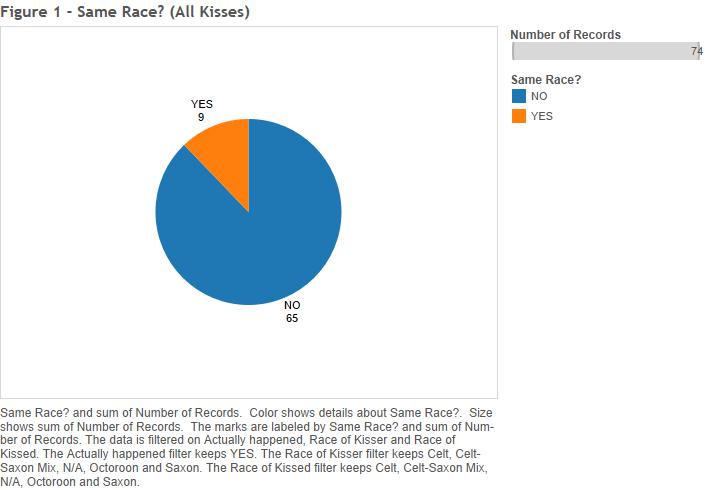
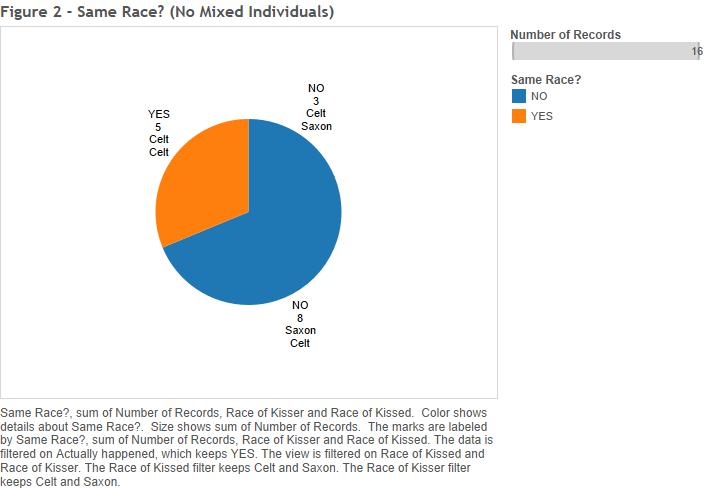
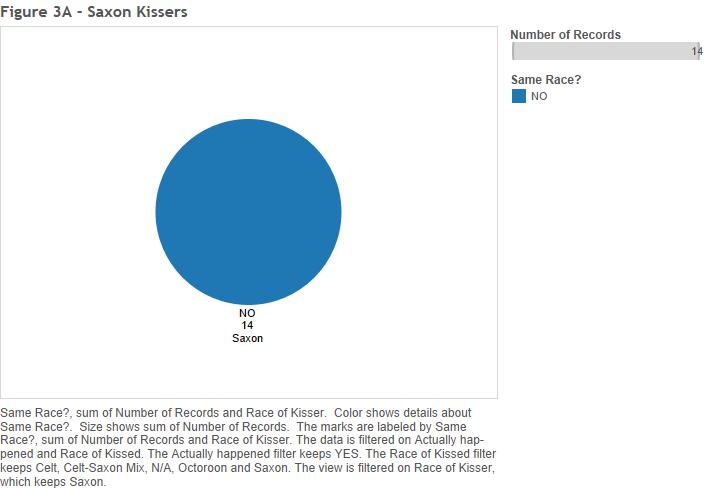

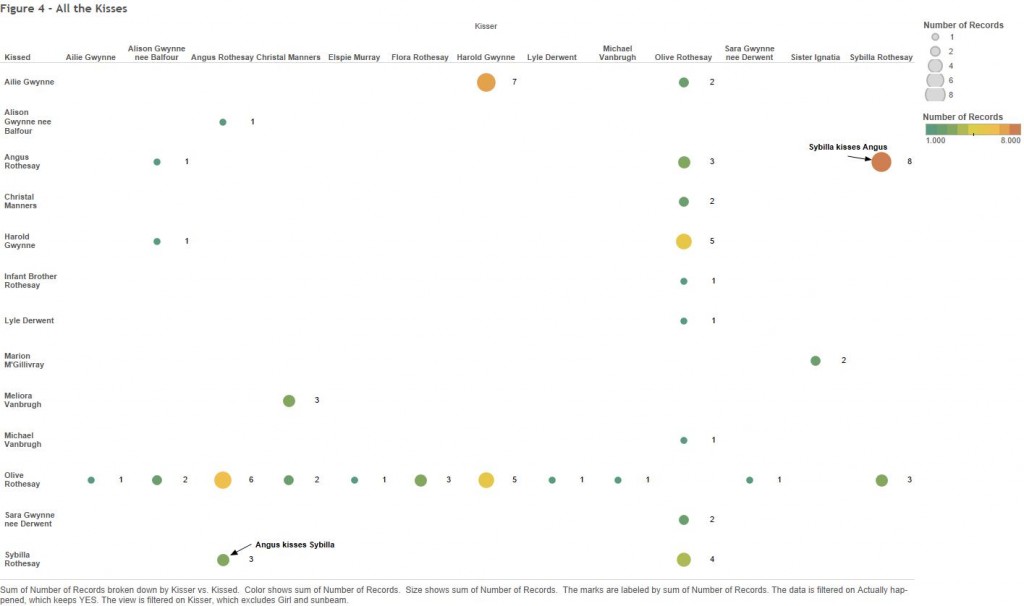
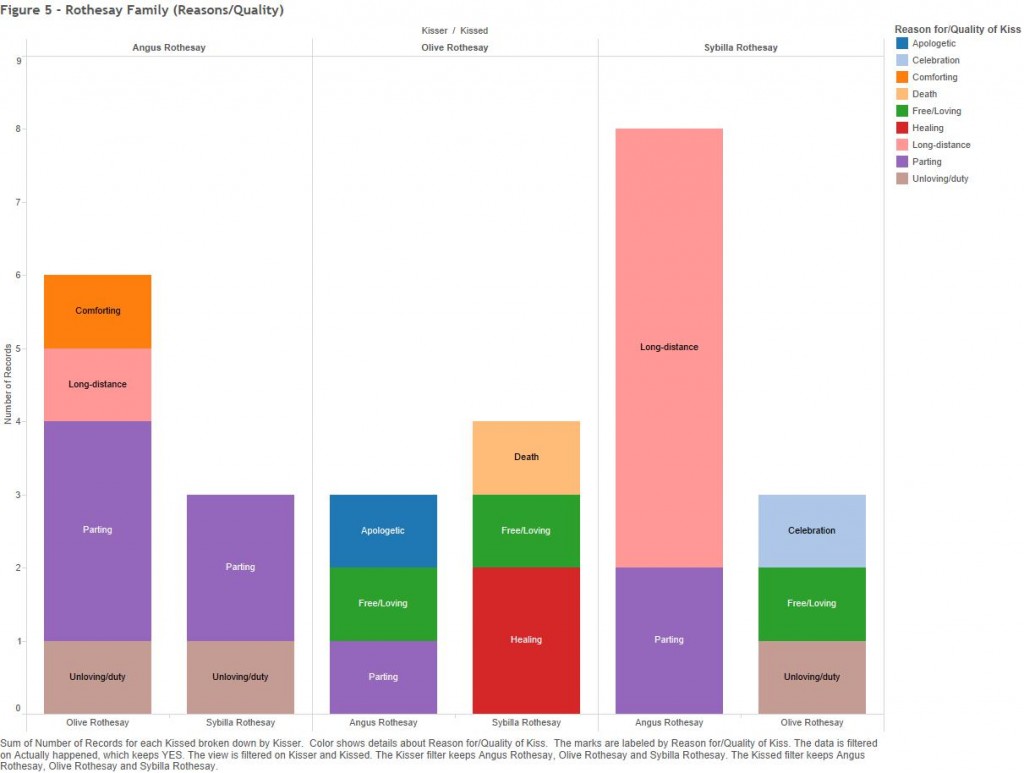
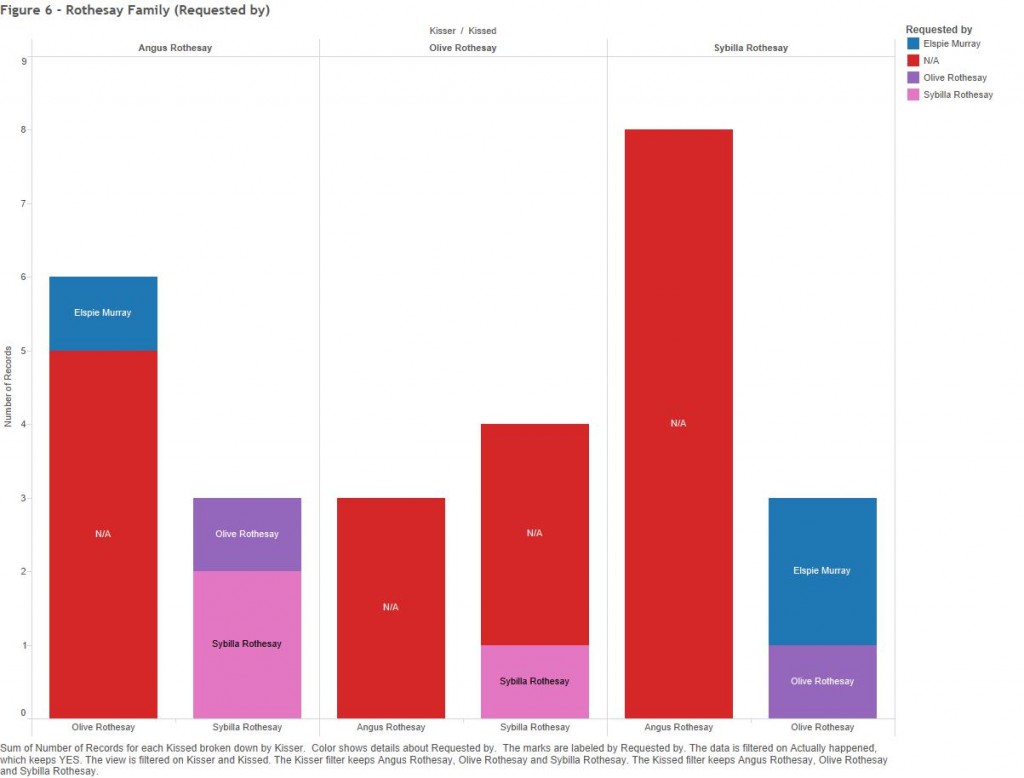
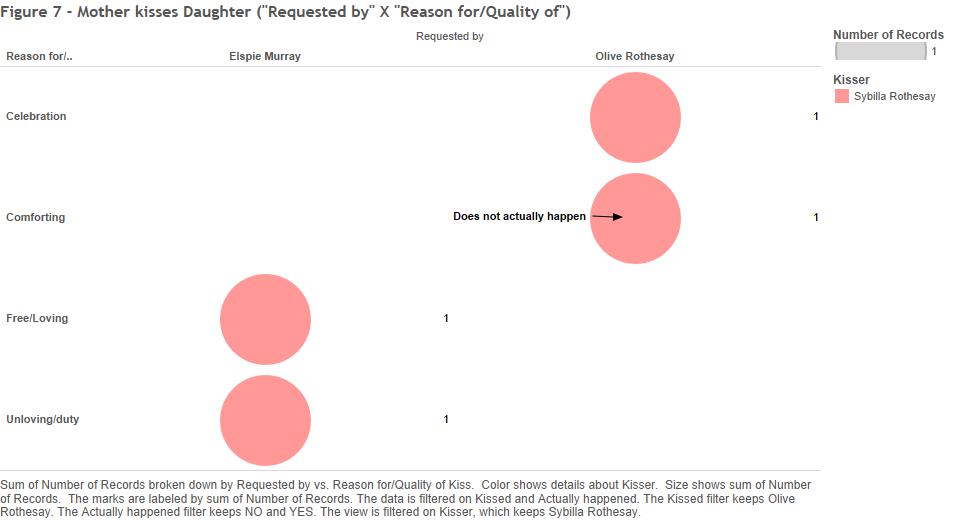
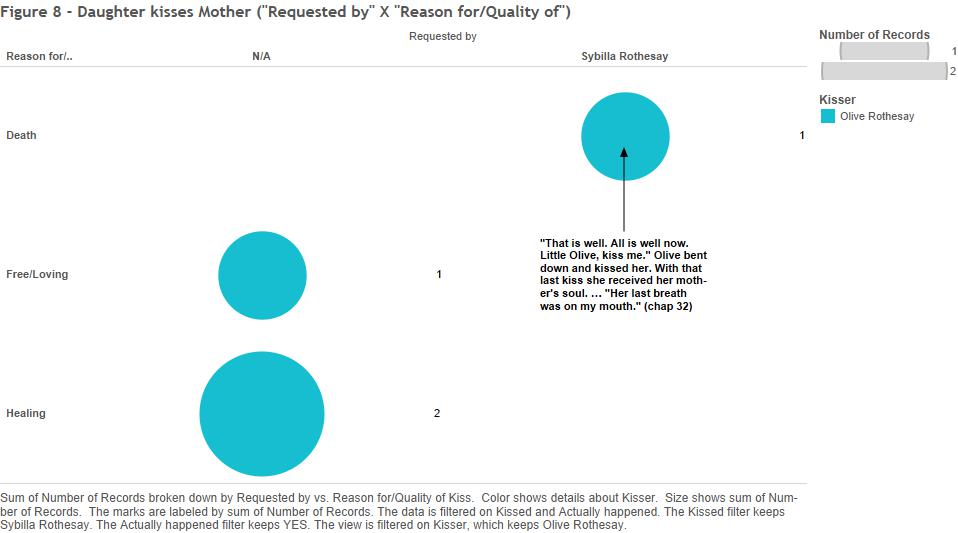
![Figure 1 - Gender Mix [Kisser-Kissed]](http://aaronellsworth.ca/wp-content/uploads/2015/04/B-Figure-1-Gender-Mix-Kisser-Kissed-1024x544.jpg)
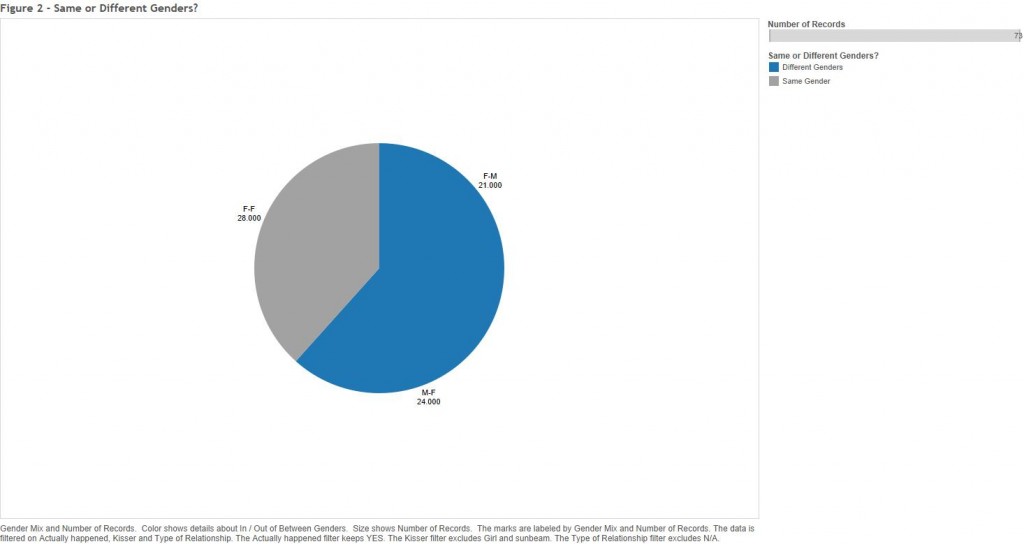

![Figure 4 - Female Friendships [Reason for/Quality of]](http://aaronellsworth.ca/wp-content/uploads/2015/04/B-Figure-4-Female-Friendships-Reason-forQuality-of.jpg)
![Figure 5 - Female Friendships [Body Part]](http://aaronellsworth.ca/wp-content/uploads/2015/04/B-Figure-5-Female-Friendships-Body-Part.jpg)
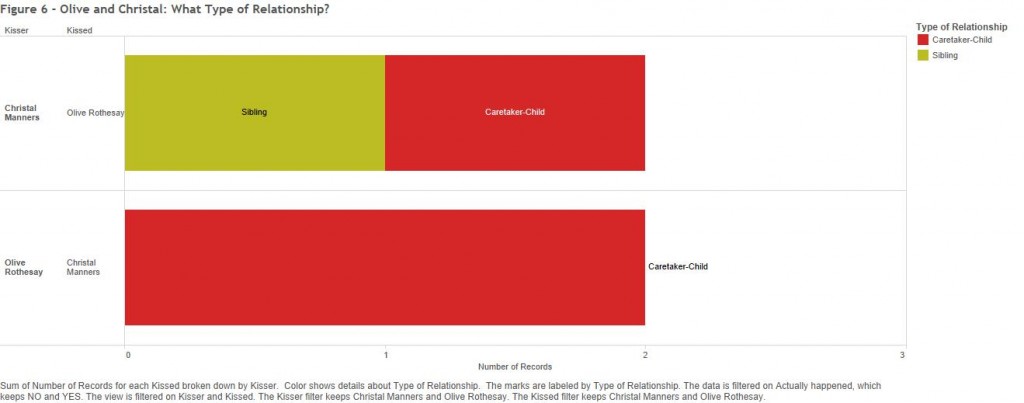

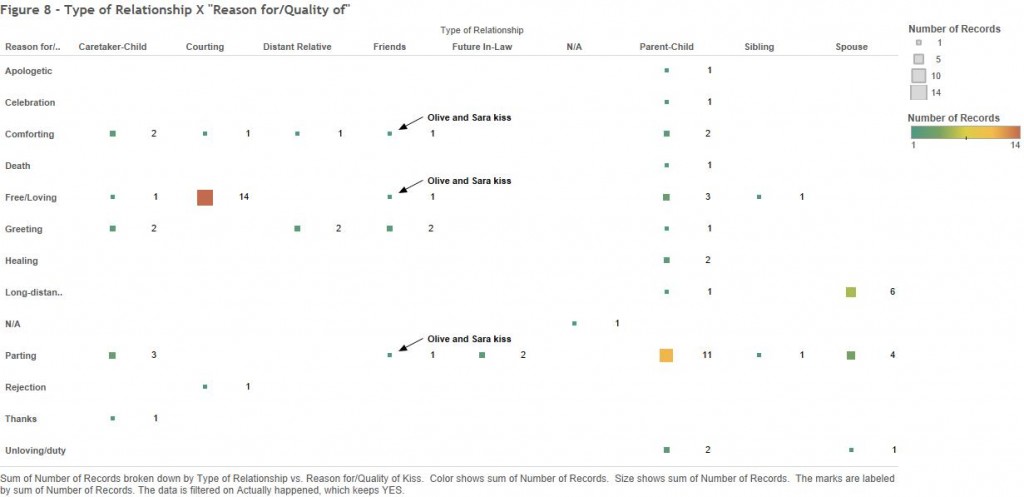
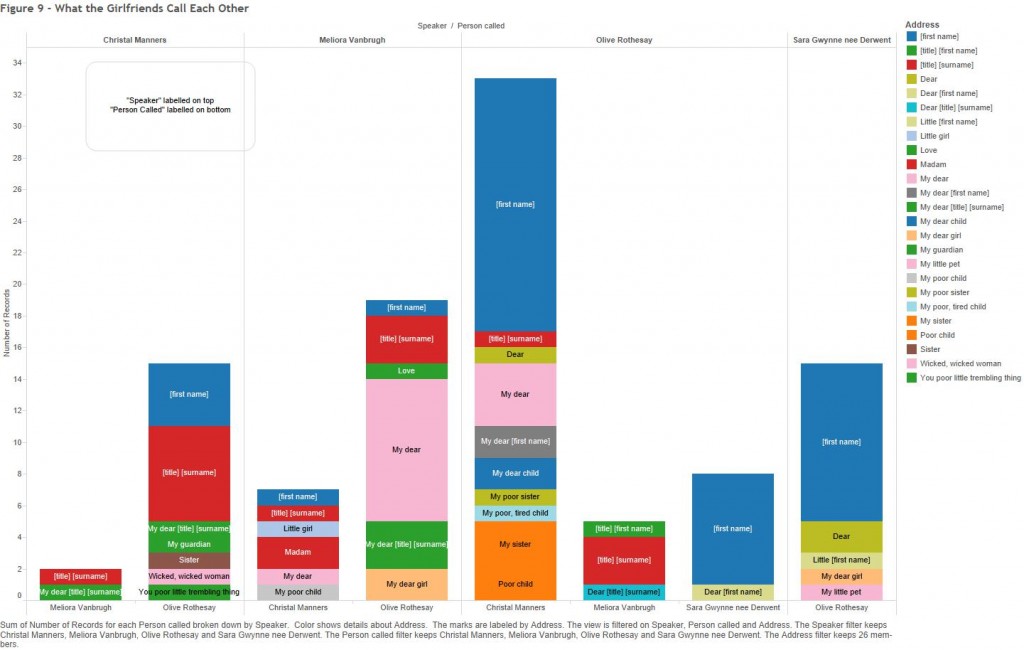
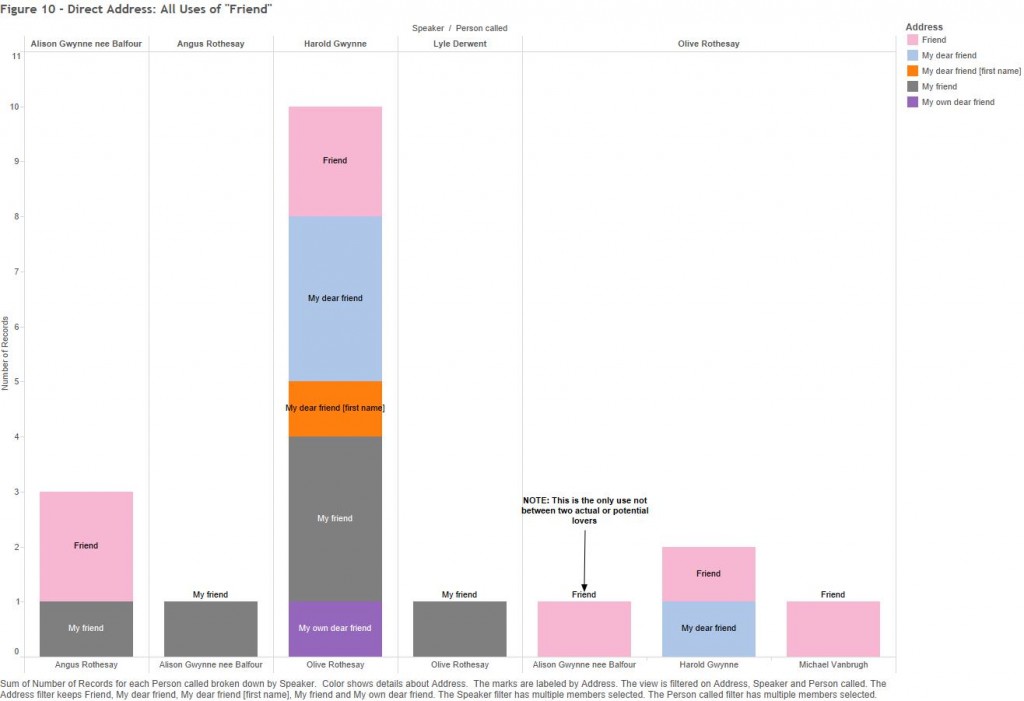

![Figure 2 - Where People Kiss Olive [Compared to Harold]](http://aaronellsworth.ca/wp-content/uploads/2015/04/C-Figure-2-Where-People-Kiss-Olive-Compared-to-Harold.jpg)
![Figure 3 - Harold and Others Kiss Olive [QualityReason]](http://aaronellsworth.ca/wp-content/uploads/2015/04/C-Figure-3-Harold-and-Others-Kiss-Olive-QualityReason.jpg)


![Figure 6 - Where Olive Kisses People [Compared to Harold]](http://aaronellsworth.ca/wp-content/uploads/2015/04/C-Figure-6-Where-Olive-Kisses-People-Compared-to-Harold.jpg)
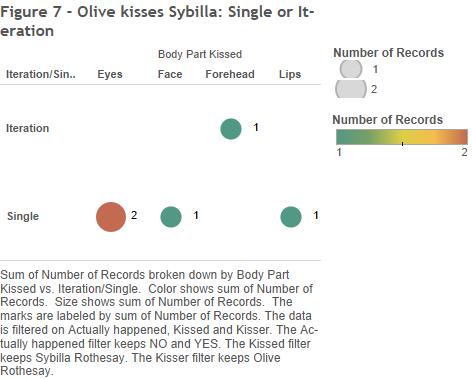
![Figure 8 - Olive Kisses Harold and Others [Reason for/Quality of]](http://aaronellsworth.ca/wp-content/uploads/2015/04/C-Figure-8-Olive-Kisses-Harold-and-Others-Reason-forQuality-of.jpg)
